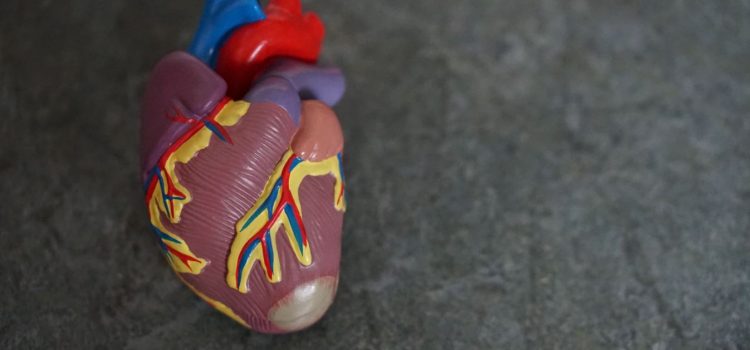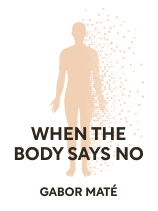

This article is an excerpt from the Shortform book guide to "When the Body Says No" by Gabor Maté. Shortform has the world's best summaries and analyses of books you should be reading.
Like this article? Sign up for a free trial here .
What is Dr. Gabor Maté’s When the Body Says No about? What is the key message to take away from the book?
In his book When the Body Says No, Dr. Gabor Maté explores the connection between stress and disease. Maté argues that modern medicine fails to recognize the devastating effects of chronic stress on our health, in part because of misunderstandings about what stress is and what causes it.
Here’s a brief overview of When the Body Says No by Dr. Gabor Maté.
When the Body Says No: The Cost of Hidden Stress
When the Body Says No by Gabor Maté says that disease is the body’s way of saying “no” to the stress placed on it by our lifestyles. Published in 2019, this book takes a biopsychosocial approach, arguing that biological, psychological, social, and environmental factors are inseparable for a holistic understanding of illness.
(Shortform note: The biopsychosocial model is the primary approach to illness taken by health psychologists, whereas medical doctors tend to take a biomedical approach. Health psychologists argue that as the leading causes of illness shift from infectious diseases to chronic diseases, the biopsychosocial model is more important than ever.)
Rather than periodic external stress events, Maté says humans in modern society tend to experience chronic stress. He says much of the stress we experience is subconscious, so we may not even recognize it as stress; in fact, it’s often those who believe themselves to be the least emotionally troubled who are at highest risk, because it’s suppression of negative emotions that is our worst enemy. Recognizing our unconscious stress is key to resolving it and avoiding the inevitable disease that comes with it.
(Shortform note: Some of the physical signs that you might have unconscious stress include: muscle tension, a clenched jaw, fidgety behaviors, shallow breathing, and overeating.)
Gabor Maté is a psychologist and physician who practiced medicine in clinical and hospital settings for over 30 years. He went on to become an addiction specialist and researcher, and he has written numerous books on the connections between mental and physical health and trauma.
In Part 1 of this guide, we’ll explain how Maté defines chronic stress as distinct from acute stress, explore what chronic stress does to our bodies, and discuss why modern medical practice fails to acknowledge it. In Part 2, we’ll examine the diseases that Maté says are linked with stress and how. In Part 3, we’ll discuss what causes chronic stress and how to recognize it in our bodies. We’ll also look at the psychological coping mechanisms we’ve developed in response to our life experiences. Finally, in Part 4, we’ll outline Maté’s prescription for developing “emotional competence”—the ability to deal with emotions in healthy ways to reduce the risk of stress-related disease.
Throughout the guide, we’ll expand on Maté’s ideas by looking at the research in related fields and at what other experts have to say on the stress-disease connection.
Part 1: The Mind-Body Relationship
Chronic stress is a psychological condition. But, according to Dr. Maté, modern medical practice is rooted in mind-body dualism, meaning that the body and mind are treated as separate entities with medical doctors treating only the body. He argues that thinking of the mind and body as two separate entities disguises the connection between chronic stress and disease. Researchers tend to miss those connections because of the way they’re defining and understanding stress, as well as their lack of attention to human psychology.
In this section we’ll discuss the problems with mind-body dualism and the predominant definition of stress. We’ll then look at how Maté understands stress and his explanation of what it actually does to our bodies.
Mind-Body Dualism in Modern Medicine
Mind-body dualism underlies the modern Western approach to medicine. This is evident in the fact that we distinguish medical doctors from psychiatrists and therapists, and they work independently of one another with little to no communication. This is a flawed practice, Maté argues, because there’s no separation between the mind and body—they’re each part of one interconnected whole. He says that medical researchers and practitioners need to put more emphasis on discovering the entire life history of patients.
The Strictly Biological Approach
Maté points out that doctors tend to primarily look for biological “causes” of disease. When they can’t find one, as with most cancers and other serious illnesses, they conclude the disease is “of unknown etiology.” Rarely do they consider a causal origin in the psychology of the human being as the host of the disease.
Maté says there’s also too much importance placed on genetic research. Genes are turned on and off by environment, he says, so environment actually plays a bigger role than our genes do in shaping us. So much is invested in genetic research while the environmental and societal causes of disease are ignored. He points out that even where external or biological/genetic risk factors are identified, those aren’t sufficient explanations. If they were, all smokers would get lung cancer and no non-smokers ever would. He says doctors fail to ask bigger-picture questions, like “why does this patient have this disease at this time?”
The Biopsychosocial Approach
In opposition to the strictly biological approach to disease, Maté advocates for a biopsychosocial approach, as mentioned earlier, which entails looking at disease from a biological, psychological, and social perspective. He also advocates for complex interdisciplinary perspectives such as Psychoneuroimmunoendocrinology (PNI): the study of the interconnections between our nervous system, immune system, hormones, and our psychological processes. The interaction between these systems serves to recognize threats, internal and external, and to respond to them in physiological and behavioral ways.
To support his claim that most physicians don’t consider the personal history of their patients, Maté points to a study that found that two-thirds of gastroenterology patients had a history of physical or sexual abuse, and yet their doctor was aware of that history in only 17% of the cases. Additionally, a common theme in the many interviews Maté conducted with his own patients, with a variety of different illnesses, was problematic childhood relationships with parents. This included emotionally distant or unsatisfying relationships, abandonment, sense of loss, and lack of autonomy.
The problem is that these histories take time and diligent attention to extract because the patients are often in denial and have repressed negative memories. In fact, Maté points out, many of them appear to be happy people with wonderful childhoods, so without intentional effort, most doctors will never know about their patients’ painful experiences.
Stress as a Response to Threat
Stress is the body’s response to any kind of threat—real or perceived. In this way, stress response can be seen as a direct link between mind and body. As Dr. Maté describes, a threat must be perceived and interpreted first by the mind, which then sends signals to the body’s systems for a response. Threats can be a multitude of specific things, but the common element is your mind’s perception of the lack (or potential loss of) something necessary for survival. This could be anything from food or shelter to love and connection.
According to Maté, the situational factors that trigger stress are: “uncertainty, conflict, lack of information, and loss of control.”
When the brain perceives “uncertainty, conflict, lack of information, or loss of control,” it activates the threat response, which means the hypothalamus, pituitary, and adrenal glands (“HPA Axis”) secrete hormones, including cortisol. Cortisol is the body’s anti-inflammatory, Maté explains. Inflammation happens throughout the body in response to a threat, and then cortisol resolves it by calming the inflammation. However, problems occur when this “HPA axis” is not functioning correctly and too much or too little cortisol flows through your body.
According to Maté, resolving the threatening situation (i.e. regaining control, or resolving the conflict) is the only way to deactivate the HPA stress response—but we often can’t. Usually, we’re not consciously aware of what the problem is, or we’re not in a position to fix it. This is why many of us live with chronic stress without even knowing.
Threats in the Modern World
When we think of stressful events, we often think of things like a car accident, a divorce, or loss of a loved one. When we experience these sorts of events, we feel the stress consciously and intensely. Maté defines this as acute stress. He acknowledges that too much of this kind of stress can be harmful, but says the more harmful form of stress is chronic—a low-grade constant stress reaction happening in our bodies throughout our lives. Much of this chronic stress is a product of our lifestyles.
- Acute stress is a natural response to the immediate presence of danger. The body initiates the “fight or flight” response, we actually flee or fight the threat, and then the body goes back to homeostasis. It’s natural and even healthy to occasionally experience this in life.
- Chronic stress is when the “fight or flight” response is activated over long periods of time, without ever being resolved—because it’s not actually a situation where we can flee or fight, and/or we’re not really aware of the “threat.” This process is more subtle and unconscious. This kind of stress is not normal or healthy.
Maté says stress response is evolutionarily built into us because it’s functional and necessary for our survival. But the kinds of “threats” we tend to perceive in the modern world are not the same ones we’re built to respond to. We’re evolutionarily built to respond to threats such as predators or famine, but we typically don’t have those threats now. So according to Maté, our bodies respond to other kinds of perceived threats that we don’t consciously think of as threats; for example, if we’re overworked or we don’t have satisfying relationships.
Part 2: The Stress-Disease Connection
Now that you understand how Maté defines stress, and what chronic stress does to the body, you may see why understanding psychology is so important for making the connection between stress and disease. Next, we’ll take a look at some of the research Maté cites, in which connections have been made between peoples’ life histories, psychological profiles, and specific diseases.
Diseases of the Nervous System
MS (multiple sclerosis) and ALS (amyotrophic lateral sclerosis, or “Lou Gehrig’s Disease”) are both diseases of the nervous system that can cause wide varieties of symptoms. According to Maté, both have also been associated with specific kinds of life experiences and personality characteristics.
It’s well known that MS flare-ups can be correlated with stress. But according to the research cited by Maté, doctors as far back as the late 1800s have also suggested a connection between life stressors and onset of the disease. Many studies since have found that people with MS are far more likely than average to have experienced trauma early in their lives, to have dysfunctional emotional issues relating to their parents, and to have other acute stressors.
Additionally, research shows that ALS patients have some striking commonalities in personality characteristics. Maté describes this personality type as fiercely independent and driven, reluctant to ask for help, and in denial of negative emotions and pain. These qualities are considered highly admirable by others, thus Maté says he has noticed that ALS patients are particularly likable, pleasant people, and he says this is something that’s widely recognized in the medical community. Maté argues that this personality trait is a result of emotional repression formed by childhood experiences, and that these individuals often have parents who never allowed them to express themselves, either emotionally or in terms of identity. So they had to create an identity based on others’ expectations and cultivate a facade of emotional toughness.
Diseases of the Gut
The common diseases of the gut (IBD/IBS and GERD) are what Maté refers to as “functional” diseases, meaning the symptoms are unexplained by any biomedical explanation. He says that it’s well known that they’re often stress-triggered, and it’s also been found that sufferers of these conditions have a higher rate of abuse in their past than did the controls. He attempts to explain these diseases by looking at studies on the relationship between trauma and pain response.
According to Maté, experiencing physical or sexual abuse lowers one’s pain response threshold, especially in the gut, because of the sensitive gut-brain relationship and the abundance of nerve cells there. Maté says that “pain is a mode of perception” and because of the gut-brain relationship, our “gut feelings” help us know when we’re safe or unsafe.
Rheumatoid Diseases
In autoimmune diseases, such as rheumatoid arthritis, lupus, scleroderma, and ankylosing spondylitis, the immune system attacks one’s own body because it can’t distinguish between healthy and unhealthy tissues. According to Maté, studies have connected psychosocial factors to the onset, flare-ups, and severity of rheumatic diseases. Like ALS, he says, these people have a characteristic personality trait: what Maté calls “compensating hyper-independence”—often due to early loss of a parent or a role-reversal relationship with a parent. Flare-ups and pain are a signal that the body is saying no, Maté says. They cause people to slow down and avoid stressful situations.
Autoimmune disease most strongly illustrates Maté’s theory that disease may be connected to one turning against oneself, or inability to distinguish between self and other, both psychologically and physiologically, which we’ll discuss later.
Cancers
In looking at cancer, we can also see some commonalities in personal characteristics. Maté explains that all humans have damaged and abnormal (even malignant) cells in our bodies. The vast majority never become cancer, however, because the immune system works to repair the damage, or the cells die off before they replicate. According to Maté, this means that for any cancer to occur, cell damage alone is not enough; there must also be some failure of the immune system that allows the damaged cells to continue replicating unchecked.
Maté cites research that shows that stress inhibits immune processes. The PNI (psychoneuroimmunoendocrine) system creates conditions that either facilitate or inhibit the growth of cancer cells, and we know that psychological processes and emotion affect the PNI system. Several studies on psychosocial factors related to cancer have found the biggest risk factor is repressed emotions, specifically feelings of anger.
Breast Cancer
Breast cancer, ovarian cancer, and prostate cancer are all hormone-related cancers. Maté describes research in which no link was found between stress and breast cancer, so the conclusion was that there was no correlation. However, Maté raises an important critique that calls this conclusion into question: In the conclusions, it was stated that the risk factors are primarily genetic and hormonal. But, Maté points out that only 7% of breast cancer patients are genetically high-risk, so that can’t be considered a strong link. And perhaps more importantly, it is well-documented that hormones are influenced by stress.
In other research described by Maté, psychosocial factors have been linked to breast cancer, including: emotional distance from parents as children; repression of emotions, especially anger; lack of supportive relationships; and, “compulsive caregiving” tendencies (self-sacrifice). He cites two different studies in which researchers could predict with 94-96% accuracy which women would be diagnosed with breast cancer based only on these psychosocial factors. Similar results have been shown with studies on ovarian cancer.
Prostate Cancer
Even though it’s known that prostate cancer is inextricably linked to hormones, and hormone balance to stress, Maté says there have been no studies investigating the link between psychosocial factors and prostate cancer. But it has been linked to environmental factors—Black American men are twice as likely to get prostate cancer as white American men. In seeking to explain why this might be the case, Maté says it can’t be racially genetic, because Black American men are six times more likely to get it than men in Nigeria. Therefore, he theorizes that it’s likely due to the social pressures of being a Black man in America, including the chronic stresses of dealing with racism, as well as a lack of community and family support networks that tend to be more common in Black American communities.
Lung Cancer
Prevailing theories state that cancers result from damage to the DNA of cells. In the case of lung cancer in smokers, some of that damage is caused by the tobacco product. Maté says that we know this damage happens, but it doesn’t explain why some smokers get lung cancer and others don’t. So, he says, there have to be other factors at play.
Maté cites two different studies that showed a link between lung cancer and repressed emotion, especially anger. Particularly compelling is a long-term study described by Maté that was done in former Yugoslavia. Around 1,400 participants were given extensive medical and psychological testing. Of the 1,400, over 600 were dead 10 years later, at which point the researchers analyzed causes of death along with the psychological profiles. In the conclusions described by Maté, the #1 risk factor for death, especially for cancer, was “rationality and anti-emotionality” (R/A)—meaning those who repressed emotions.
Furthermore, cancer death was 40 times higher in those who scored the highest in the category for repressed emotion. Researchers were able to correctly predict which people would die of cancer in 78% of cases based on just their scores on R/A and feelings of hopelessness.
Part 3: Ultimate Causes of Disease
Considering the links that have been observed between these diseases and stress, personality, and life experiences, Maté argues that there are clearly contributing causes beyond the biological. He says that doctors often look primarily for “proximate” causes but fail to look for “ultimate” causes. Proximate causes include the immediate observable causes, while ultimate causes are the bigger-picture explanations.
With all the diseases discussed, Maté is looking for the ultimate cause in the psychology of the human host. In this section, we’ll look at how chronic stress is ultimately caused by childhood experiences of perceived threat that go unresolved. You’ll learn what kinds of parent-child relationships contribute to these experiences in children, and how modern society creates the conditions for these parenting patterns. You’ll also see why Maté says that nobody is to blame for this, so assigning blame is meaningless.
Self vs. Other: Differentiation
One of the areas where childhood development can go awry is in the process of differentiation. Maté explains that humans are naturally meant to develop from a state of total dependence toward an interdependent independence—meaning we should develop our own sense of self as separate from others and be able to self-regulate our emotions, but also have interdependent supportive relationships. Any dysfunction in the parent-child relationship, Maté says, can cause problems with the internal processes that regulate the child’s survival mechanism. This can result in the individual staying too dependent on others and not learning to self-regulate, or becoming too independent and not developing supportive relationships.
Parental Nurturing
Another dynamic that can cause stress-related developmental problems in children is the amount of nurturing affection given by the parent to the child. Maté says that in addition to feeling safe as children, we also need to feel loved.
Maté explains that almost 90% of brain development takes place in the first few years of a child’s life, and this development is a product of inherited genetic factors and environmental conditions. He says that loving emotional interaction with a parent, or the lack thereof, affects the release of hormones, and the amount and balance of those hormones affect brain development. When a child’s brain is not getting consistent messages of love and nurturing, it develops in such a way that it can’t correctly distinguish between threats and non-threats. This is why physical touch by the mother is important for proper development in all mammals and crucial for humans to be able to develop healthy relationships. Research on premature babies, Maté says, shows how powerfully affectionate touch impacts development.
Maté points out here that it’s not only abuse and trauma that cause stress-related illness— some people have the same stress problem not because of what was done to them, but because of what was withheld from them. Children don’t just need physical touch, affection, and safety; they also need “attunement,” which means a parent being “tuned in” to the child’s needs. Even parents who really love their children, and whose children know they’re loved, are sometimes lacking attunement, Maté says.
Personality vs. Positionality
Beyond early childhood development dynamics, there are also situational factors in families and societies that can lead to individuals adopting certain personality characteristics that are correlated with chronic stress. We’ve seen that some personality traits do contribute to greater stress. But Maté explains that these personality traits aren’t simply individual attributes; they are a result of larger family dynamics–our “position” in a multigenerational family–and those families are positioned within a culture and society.
Maté points out that changes in social structure due to modernity have destroyed much of the foundational social connections humans evolved with. Previous humans lived in extended families and communities with multiple nurturing adults caring for children. Now, he says, with nuclear families and the socioeconomic structure (particularly in capitalist societies), parents have to work while children are put into daycare and schools separated from extended family. Hence, many of the diseases discussed here, Maté says, are products of more recent civilization.
Removing Blame
In light of the strong connection between parenting dynamics, personality traits, and chronic stress, we might naturally conclude that parents are to blame for their children’s illness. Maté also points out that he has received criticism for his theories based on the accusation that pointing out the connection between individuals’ personality traits and their disease is “blaming the victim.” However, Maté says recognizing that illness may be caused in part by a person’s psychological state, personality traits, or environment is not “blaming the victim.” Rather, he says pointing out that the person may actually be able to do something about it empowers them to take responsibility for their own health.
Additionally, Maté says that there is no call for blaming our parents, or for blaming ourselves for our children’s illnesses. After all, the parent’s brain developed in response to their own childhood relationship with their parents.
Part 4: Prescription for Healing
So, now that we’ve examined the multifaceted “ultimate causes” of chronic stress, and therefore disease, you may be tempted to feel resigned, knowing these patterns are embedded in your psyche from early childhood. However, Maté emphasizes that at any point in your life, you can take control of your chronic stress and cultivate a healthier disposition and lifestyle. In this final section, we’ll take a look at Maté’s advice for developing emotional competence as a way to counteract and alleviate the effects of chronic stress on your mind and body.
Avoid Toxic Positivity
The first piece of advice Maté offers for counteracting the effects of chronic stress on our bodies is to reject the common overemphasis on “positive thinking.” He says this approach to dealing with negative emotions only makes people repress them. Maté says healthy thinking includes acknowledging all of our genuine feelings. Focusing on only the positive and denying the negative is a defense mechanism developed by those who are hurt. But it doesn’t fix it.
In his suggestion to embrace “the power of negative thinking,” Maté doesn’t mean to dwell; he means be willing to look at what’s wrong. Pay attention to the “negative” signals your body is giving you. Have the courage to ask, “What is my body saying no to?” instead of deploying your coping mechanism to avoid the pain. Maté says that when you avoid what’s “wrong” and focus only on what’s “right,” you’re being controlled by others. You’re not an autonomous being when you live to please others, when you’re acting out a role based on expectations, and when you never say “no.”
To be clear, Maté affirms that genuine positive feelings do contribute to health—love, joy, and happiness increase our well-being. The problem is the insincere positive feelings people use to cover up negative feelings.
Listen to Your Body
Becoming aware of all of your true feelings means learning to trust your gut and recognize the signs of stress in your body. Maté says that you should start tuning in more consciously to what your body is telling you. Some signals of underlying stress include: rapid heartbeat, frequent urination, excessive sweating, digestive issues, and unexplained pain such as frequent back pain or headaches. He also says to watch for emotional and behavioral signals, such as: depression, anxiety, hypervigilance, hypersensitivity, over-reactivity, and impulsivity. If you recognize these signs, see them as messages from your body, meant to make you aware of an underlying issue.
Maté encourages you to get in touch with your repressed anger and explore what it means. Anger is toward something—some perceived threat. Identify what that is, and then allow yourself to feel the anger, to sit with it, and contemplate it until it dissipates, and/or you can get help with it through therapy.
Be Your Authentic Self
Maté emphasizes authentic living. Reflect honestly on the relationships in your life. Take off the “rose colored glasses” and ask where your own needs haven’t been met, where you’ve put aside your needs for others, or suppressed your feelings and felt unsupported and unseen. Do so with compassion, recognizing that others are just acting from their own conditioning. Refrain from blame. What matters, Maté says, is your responsibility for yourself to change things going forward. So, he suggests you ask yourself whether you’ve lived your life according to who you truly are, or if you’re trying to live up to others’ expectations.
Maté says to watch for guilt—guilt is often a sign that you’re doing something for yourself instead of others. If you recognize this, learn to embrace the guilt and use it as a signal that you’re actually doing something right. If saying “no” to something makes you feel guilty, but saying yes causes resentment, Maté says you should always choose the guilt. The resentment will be much more damaging.
Connect With Others
Maté says we all need to develop healthy support networks. Copious research shows that lonely, disconnected people are at greater risk for illness, while social support alleviates stress and decreases risk of disease. So seek out stronger social support networks. Reach out and make connections. Especially if you’re suffering, find others to connect and form emotional attachments with.
Tend to Your Spirit
Finally, Maté offers advice for tending to not just your mind and body but your spirit. He says this means connecting with something beyond yourself, and he suggests two major avenues for this:
- Your creative impulse: Maté emphasizes that everyone has some sort of creative urge; this doesn’t just refer to art. It could be any way in which you express yourself—for example, through writing, dancing, gardening, cooking, or building. Whatever your avenue of expression is, Maté urges you to explore it and incorporate more of it into your life.
- Your connection with the universe: Whatever this means for you personally, Maté suggests that you try to connect with something greater than yourself. For some people this is religion, or God, while for others it may be connecting with nature, practicing meditation, studying astronomy, or anything else that makes you feel like you’re part of a greater whole.
A truly holistic approach to health, Maté says, must involve all three dimensions of the whole person: body, mind, and spirit.

———End of Preview———
Like what you just read? Read the rest of the world's best book summary and analysis of Gabor Maté's "When the Body Says No" at Shortform .
Here's what you'll find in our full When the Body Says No summary :
- How stress can manifest as chronic illness
- How to heal from and avoid stress-related diseases
- Why toxic positivity can make you sick






